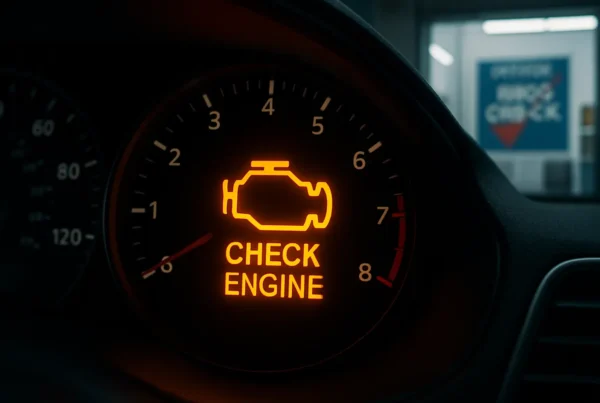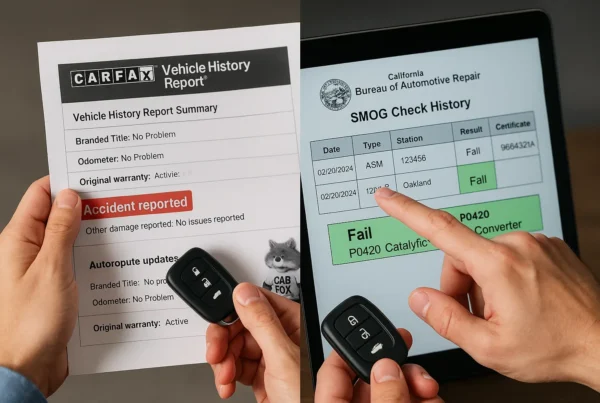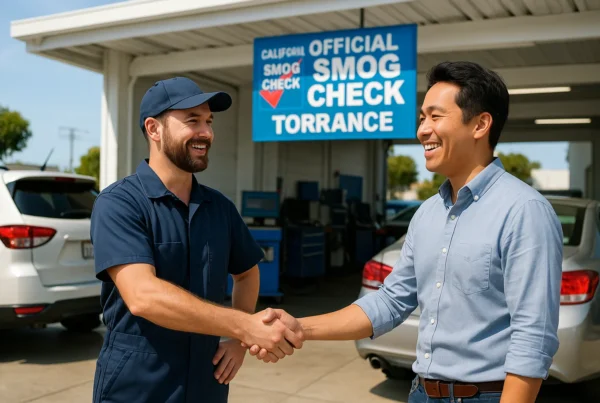Smog Test Failures: Common Issues and Smart Prevention
Failing a smog test in California isn’t just an inconvenience—it can delay your vehicle registration and lead to unexpected repair costs. At EZ Smog Check, we’ve seen countless vehicles fail due to issues that could’ve been addressed with a little foresight. Whether you’re preparing for a renewal inspection or trying to sell a car, here’s what you need to know to increase your chances of passing your smog test with flying colors
1. Illuminated Check Engine Light
A check engine light that’s on—even if the car runs smoothly—means an automatic fail in California.
Why it matters: The check engine light (CEL) signals that the onboard diagnostics system (OBD-II) has detected a problem with the vehicle’s emission control system. Smog testing stations are required to fail any vehicle with an active CEL.
How to prevent it:
- Use an OBD-II scanner to identify the specific error code.
- Resolve the underlying issue with a trusted mechanic.
- After repairs, drive your vehicle for 100–200 miles over a few days to allow the system to reset and complete internal emissions monitoring.
2. Faulty Oxygen Sensors
Oxygen (O2) sensors monitor the air-fuel ratio and send data to the engine’s computer.
Why it matters: A failing oxygen sensor can cause your engine to run too rich or too lean, which increases harmful emissions and reduces fuel efficiency. It’s one of the most common causes of smog test failures.
How to prevent it:
- Have your O2 sensors checked regularly, especially if your vehicle is older or has over 100,000 miles.
- Pay attention to signs like poor fuel economy or rough idling.
- Replace failing sensors promptly to prevent damage to the catalytic converter.
3. Cold Engine at the Time of Testing
Your car’s emissions system performs best at optimal engine temperature.
Why it matters: If you bring your vehicle to a smog check station with a cold engine, the test may reflect higher emission levels than normal. Cold starts temporarily increase emissions until the catalytic converter heats up.
How to prevent it:
- Drive your vehicle for at least 15–20 minutes before your test.
- Avoid letting your car sit idle before the inspection.
- If you’re scheduled for an early morning appointment, take a short drive around the neighborhood first.
4. Damaged or Failing Catalytic Converter
The catalytic converter is a critical part of your emissions system, responsible for converting harmful gases into less toxic substances.
Why it matters: If the converter is clogged, cracked, or degraded, it won’t adequately reduce emissions—leading to elevated pollutant levels that can cause your car to fail the smog test.
How to prevent it:
- Address any issues related to engine misfires, poor fuel mixture, or oil consumption, which can damage the catalytic converter over time.
- Replace a failing catalytic converter as recommended.
- If your vehicle smells like rotten eggs or has noticeably reduced engine performance, it’s time for a check-up.
5. Leaky or Loose Gas Cap
A small issue with surprisingly big consequences.
Why it matters: A loose or cracked gas cap can cause fuel vapors to leak, which increases evaporative emissions and triggers error codes. This is one of the easiest yet most overlooked reasons for smog test failure.
How to prevent it:
- Always check that your gas cap is tightly secured after refueling.
- Replace it if the seal appears cracked, broken, or worn.
- Make sure the cap clicks several times when you tighten it—this indicates a secure fit.
Final Thoughts: Preparing for a Smog Test
A successful smog check doesn’t need to be a gamble. By keeping up with routine maintenance and addressing issues early, you can avoid the frustration of a failed inspection. At EZ Smog Check, our certified technicians are here to help ensure your vehicle is ready to pass—whether that means pre-inspection advice or a quick retest after repairs.
Need a smog check in California? Contact EZ Smog Check today to schedule your appointment or walk in at your convenience.



